The Copper Hewitt - National Design Museum takes a look at the state of design in its exihibition Design Life Now. The 2006 Triennial presents experimental projects, emerging ideas, major buildings, and new products and media created by 87 designers and firms from 2003 to 2006. The show will run through July 29, 2007.
National Design Museum
Review of the Exhibiton
Thursday, December 28, 2006
Friday, December 22, 2006
New Materials: Resource
Blaine Brownell, Seattle based architect, is quickly becoming the source through multiple media (books, blog and email) to track developments in new materials.
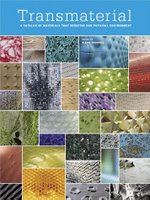 The Book
The Book
The Website
Business Week Article
Another Source
 The Book
The BookThe Website
Business Week Article
Another Source
Trends: Miniaturization and Customization
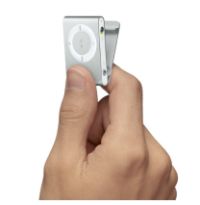 Products have been getting smaller for years, but the pace at which technology is allowing the size of products to shrink has been seemingly shortening with each new product line introduction. The public has responded to Apple's shrinking Ipod favorably, maybe the reduced price of each new model has a little to do with it. Acceptance of this trend is also being helped along by the accompanying desire/limits of today's consumers for portability, energy conservation and smaller spaces.
Products have been getting smaller for years, but the pace at which technology is allowing the size of products to shrink has been seemingly shortening with each new product line introduction. The public has responded to Apple's shrinking Ipod favorably, maybe the reduced price of each new model has a little to do with it. Acceptance of this trend is also being helped along by the accompanying desire/limits of today's consumers for portability, energy conservation and smaller spaces. Where is this trend heading you ask?
Well, with the increased use of embedded computers and wireless connectivity many products will simply disappear from view, particularly those whose primary function is to store and transport information. Data will increasingly be stored and then retrieved via the internet, leaving the need for information tools that perform a unique task (e.g. phone, camera, calender, calculator etc.) or better yet a single tool that can modified perform a desired task when needed.
The miniaturization trend coupled with flexible manufacturing techniques is creating the opportunity to easily create customized products. Many would-be entrepreneurs are responding to this new ability by designing products for micro-markets (themselves and friends).
What impact will the democratization of design have on the designer you ask?
Well as with any informed constituent it will raise the bar of expected knowledge and skill requirements for the designer. Conversely, many pseudo-designers will be exposed, if not tared-and-feathered, and those with talent will be rewarded with more work then they can handle. But ultimately, the demand for well thought through products solutions that address the needs of a user group will continue to provide opportunity to those who can deliver.
As an industry the cell phone manufactures over the last ten years have reflected this movement to miniaturization and customization (think ring tones) better than most.
Thursday, December 21, 2006
Design History: Corporate Identity
Peter Behren, a German architect signed on to work as a consultant to AEG, a large electrical corporation (1907 to 1914), and in so doing he created what is considered the first corporate identity program.
He redesign the company's products, buildings, graphic materials, its trademark, sales outlets etc. Behren's was keenly aware of context and image, thus fashioning a theme which unified the company's message to the public.
 His AEG Turbine factory was a landmark of modern architecture.
His AEG Turbine factory was a landmark of modern architecture.
Behren's Biography
He redesign the company's products, buildings, graphic materials, its trademark, sales outlets etc. Behren's was keenly aware of context and image, thus fashioning a theme which unified the company's message to the public.
 His AEG Turbine factory was a landmark of modern architecture.
His AEG Turbine factory was a landmark of modern architecture.Behren's Biography
Wednesday, December 20, 2006
Design Education: Moving beyond Form
 Design students would benefit greatly from being challenged to provide a rationale for the choices made on the way to a design solution.
Design students would benefit greatly from being challenged to provide a rationale for the choices made on the way to a design solution.Design curiculums have for years focused on teaching design mostly from a form, technology and materials perspective. The opportunity in designing information products is to challenge design students to weight the value of adding or not adding a feature to a product. "Because we can" is not a suffiecent reason to add an additional feature.
Values need to be assigned to features in order to determine if including them would cost more than the value they would add. The hidden cost of added features range from: a delay at getting a product to market because shortage of parts, increased complexity for the user when operating the product, added expense thus a higher selling price potentially missing the target market just to name a few.
In order to ask design student to venture beyond form considerations would mean that the instructor would need to be an astute practioner able to provide the correct balance so that students gain the ability to weight the appropriatness when deciding on solutions that work not only on the form level but also business and usuability level. This is asking alot but professionals can grow to it.
Tuesday, December 19, 2006
A Design Classic: Packaging
A well thought through design doesn't end with the product itself, but also considers how it is contained and received by the consumer.
 The Coca-Cola "waisted" bottle designed by Alexander Samuelson and introduced in 1915 was not it's first bottle but it is the one most associated with the product.
The Coca-Cola "waisted" bottle designed by Alexander Samuelson and introduced in 1915 was not it's first bottle but it is the one most associated with the product.
It has become an global icon not only for the company but for American beverages.
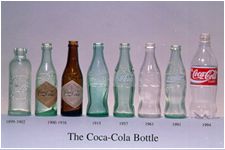 The Story of the Contoured Bottle
The Story of the Contoured Bottle
Earlier Bottles
 The Coca-Cola "waisted" bottle designed by Alexander Samuelson and introduced in 1915 was not it's first bottle but it is the one most associated with the product.
The Coca-Cola "waisted" bottle designed by Alexander Samuelson and introduced in 1915 was not it's first bottle but it is the one most associated with the product. It has become an global icon not only for the company but for American beverages.
 The Story of the Contoured Bottle
The Story of the Contoured BottleEarlier Bottles
Material History: Bakelite (1909)
Bakelite, the worlds first synthetic plastic introduced in 1909, became "the material of a thousand uses".
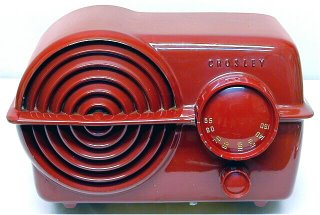
This thermosetting material developed by Leo Baekeland, led plastics to be described by many as the material of the 20th century.
Because of its non-conductor properties and it being particularly suitable for mass production moulding processes made Bakelite material useful as the exterior skin of electrical appliances, and thus allowed the asethetic of consumer products of that time to take on new shapes.

This thermosetting material developed by Leo Baekeland, led plastics to be described by many as the material of the 20th century.
Because of its non-conductor properties and it being particularly suitable for mass production moulding processes made Bakelite material useful as the exterior skin of electrical appliances, and thus allowed the asethetic of consumer products of that time to take on new shapes.
The State of Design in Washington DC
The Washington Post's desgin critic, Linda Hales, reflects on the status of design as she closes out her tenure at the paper.

Washington Post Aricle
Washington Canal Park Concept Document
"design has worked its way into everyday life and aspirations in our community"

Washington Post Aricle
Washington Canal Park Concept Document
Saturday, December 16, 2006
Its Time for more Laundry Options
I think it is time for American consumers be given the option to purchase a combination washer and dyer. The appliance industry in America has protected its market by offering only the separate units for decades. But, living situations have changed, with more consumers living in smaller spaces and living alone, but their options for laundry are still limited.
Do we still want to devote an entire room to laundry, must it be in the basement, must we unload one unit to fill another, might we wash smaller loads if it was convenient, can washing and drying be combined into a single unit?
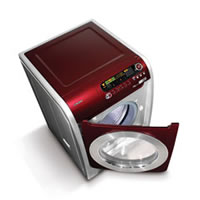
Samsung's Solution
Research Findings
Video on the History of the Washing Machine
Do we still want to devote an entire room to laundry, must it be in the basement, must we unload one unit to fill another, might we wash smaller loads if it was convenient, can washing and drying be combined into a single unit?

Samsung's Solution
Research Findings
Video on the History of the Washing Machine
The Broom Improved

This solution seems obvious but the merging of the broom and vacuum eliminates the need for the dust pan and the accompanying strain on the back.
I do think the solution can be tweeted more to fully resolve its potential. The handle does not seem to have been addressed at all. Improving the user's comfort and control by applying basic human factors to the handle could make this a winning product.
 Company Infomation
Company InfomationVideo on the History of the Vacuum
Friday, December 15, 2006
Tangible Media: The Space in Between

The patterns of our daily lives will be altered as computers and sensors are embedded into everything around us. Research at MIT's Media Lab and other programs like it are looking into how physical form can be given to digital information.
Designers can assist in constructing for users the bridge (interface) between the physical and virtual worlds.
MIT Research
Video of Drawing Tool
Genius and Pioneer: Nikola Tesla
Nikola Tesla is the true unsung prophet of the electronic age. His discoveries were the foundation on which 20th century industrial development in the United States was base.
 Nikola Tesla, 1856 to 1943, defined the principles by which electrical energy could be harnessed and transmitted.
Nikola Tesla, 1856 to 1943, defined the principles by which electrical energy could be harnessed and transmitted.
He developed alternating current (AC) power generation and how energy can be distributed over long distances; the universal transmission; wireless communication which allowed for the development of radio and television.
The Father of the Electric Age
Tesla Biography
Tesla Museum
Book by Nikola Tesla
 Nikola Tesla, 1856 to 1943, defined the principles by which electrical energy could be harnessed and transmitted.
Nikola Tesla, 1856 to 1943, defined the principles by which electrical energy could be harnessed and transmitted.He developed alternating current (AC) power generation and how energy can be distributed over long distances; the universal transmission; wireless communication which allowed for the development of radio and television.
The Father of the Electric Age
Tesla Biography
Tesla Museum
Book by Nikola Tesla
Technology Lesson for Kids
Here is nice online lesson on the Industrial Revolution and how one invention was follow by others and the resulting impact on life and society.
History of the Industrial Revolution
The Secret Life of Machines Series
Videos
History of the Industrial Revolution
The Secret Life of Machines Series
Videos
Thursday, December 14, 2006
Ten Products that have Change our Parents Lives
Over the past seventy years several products have altered the lives of our parents. How much more should we anticipate our lives being changed as a result of the pace with which new products and technologies are being introduced.?
1) Television (see link below for the list)

The List of Ten
The List of New Concepts
Video The History of Televison
1) Television (see link below for the list)

The List of Ten
The List of New Concepts
Video The History of Televison
Wednesday, December 13, 2006
Drawing: The Disappearing Art of Design Thinking
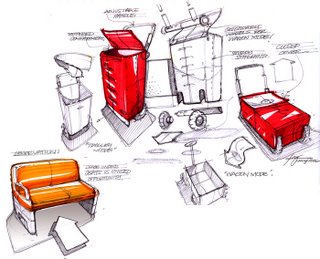 Rendering images with pencil on paper is a fading skill among many design students. But for those that develop and use the skill they are often able to set themselves apart by the quality of the designs they produce.
Rendering images with pencil on paper is a fading skill among many design students. But for those that develop and use the skill they are often able to set themselves apart by the quality of the designs they produce. Drawing helps to faciliate thinking. Hence increasing the potential to work through a problem while also creating a visual record of one's thinking process.
Drawing skills are respected by older practicing design professionals, many who have never relied on the computer as a tool and often are the ones in the position of evaluting potential new employees.
Tuesday, December 12, 2006
Presenting a Design Concept
The structure of a presentation has the ability to persuade decision-makers to green light a project or not.
Washington DC's city government presented a plan to build a bike station.

You decide if the concept is presented clearly and is persausive enough?
Bike Station Concept Proposal
Washington DC's city government presented a plan to build a bike station.

You decide if the concept is presented clearly and is persausive enough?
Bike Station Concept Proposal
Monday, December 11, 2006
OrangeWorks: Home Depot's New Product Line
What does it mean when the worlds largest home products retailer partners with a leading design consultancy to develop new products?
It could be said that HD is taking a cue from Target's success in building brand destinction through design. This approach to growing the business is not new, Sears did the same when it was the leading retailer and produced brands like Kenmore and Craftman tools.
We can only hope that the HD customer will be provided with appropriately designed quality products that are supported directly by the organization.
Orange Works Press Release
The Arnell Group
The Target Effect
It could be said that HD is taking a cue from Target's success in building brand destinction through design. This approach to growing the business is not new, Sears did the same when it was the leading retailer and produced brands like Kenmore and Craftman tools.
We can only hope that the HD customer will be provided with appropriately designed quality products that are supported directly by the organization.
Orange Works Press Release
The Arnell Group
The Target Effect
Future Trend: More Designers for India and China
Many countries have established design policies that promote Design and the training of designers as an integral part of their national education policy.
America does not have a national design policy, at best issues around design and design education are left to professional organizations (i.e. AIGA, IDSA) to address. So as nations compete to grow their national economies would America benefit from developing a uniform policy of its own?
In other words, as with industries like the textile or automobile, will we leave American companies to compete against nation states on their own? Will American companies answer be to export their design work? Will individual designers have difficulty competing with peers trained overseas?
India Invests in Design Education
India's Design Policy
America does not have a national design policy, at best issues around design and design education are left to professional organizations (i.e. AIGA, IDSA) to address. So as nations compete to grow their national economies would America benefit from developing a uniform policy of its own?
In other words, as with industries like the textile or automobile, will we leave American companies to compete against nation states on their own? Will American companies answer be to export their design work? Will individual designers have difficulty competing with peers trained overseas?
India Invests in Design Education
India's Design Policy
Sunday, December 10, 2006
Company: OXO - Universal Design
An American housewares company that has for 15 years addressed the needs of users by focusing on designing products that allow the broadest possible number of people (older, younger and people with limited abilities) to use their products.
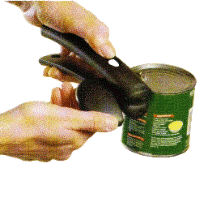 Fast Company Article
Fast Company Article
Universal Design Principals
Good Grips
Oxo in Japan
Universal design principles came to light in the 1980's and led to more consideration being given to older and special needs of consumers. Hence designer's were encouraged to be more inclusionary when developing products.
 Fast Company Article
Fast Company ArticleUniversal Design Principals
Good Grips
Oxo in Japan
Universal design principles came to light in the 1980's and led to more consideration being given to older and special needs of consumers. Hence designer's were encouraged to be more inclusionary when developing products.
Class Project: The Iron
The iron would be a great product in which to direct students in the evaluation and comparison of current product offerings and then lead them into a study exploring form. This is a product which most all homes have and students would have assess to.
 The iron has maintained the same fundamental function and its form has remained a constant.
The iron has maintained the same fundamental function and its form has remained a constant.
The opportunity for students would be consider elements like water collection and storage, controls, the power source and cord arrangement. This would be considered in the light of culture and new technologies.
Review of Irons
 The iron has maintained the same fundamental function and its form has remained a constant.
The iron has maintained the same fundamental function and its form has remained a constant. The opportunity for students would be consider elements like water collection and storage, controls, the power source and cord arrangement. This would be considered in the light of culture and new technologies.
Review of Irons
Saturday, December 09, 2006
Design History: Dieter Rams
Using a visual language based on simplicity and function this German trained architect grew to become one of the most influential industrial designers of the latter half of the 20th century.
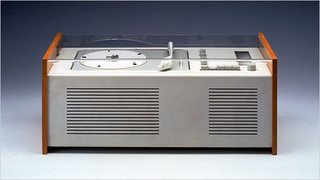
Dieter Rams (b.1932-) freed consumer electronic equipment from the large wooden consoles of the fifties and fashioned efficient new housings made of plastic and metal. As with other truly influential designers, he applied new technologies to solve problems that satisfied the needs of consumers while also adding value to his employer - Braun.
 Biography
Biography
Article
Article

Dieter Rams (b.1932-) freed consumer electronic equipment from the large wooden consoles of the fifties and fashioned efficient new housings made of plastic and metal. As with other truly influential designers, he applied new technologies to solve problems that satisfied the needs of consumers while also adding value to his employer - Braun.
 Biography
BiographyArticle
Article
Friday, December 08, 2006
Design Strategy: Nintendo Game Console
 After a few weeks on the market Nintendo's game console (Wii) seems to be changing the game and getting gamers' off the couch. By making the right decisions about the placement of their product in the market Nintendo could ensure the continued growth of their business.
After a few weeks on the market Nintendo's game console (Wii) seems to be changing the game and getting gamers' off the couch. By making the right decisions about the placement of their product in the market Nintendo could ensure the continued growth of their business.Their decisions appear to have considered the users gaming experience and wallet over flashy technological features on this go-round. This not only leveraged their position as underdog, against to large revivals that have price their systems much higher, but they have taken the lead in redefining the gaming experience. Therefore, Nintendo is likely to draw in new users and add, if not, convert existing Sony and Xbox owners.
Nintendo/Sony/Microsoft is one Strategy Better?
Nintendo Users Dilemma
Wii Straps
Wii Demo:
How it WorksHow It Works
Bottom Line Numbers
Designer's Salary Survey
 The Institute of Design's (ID) salary survey provides insight into what graduates of their master programs have reported earning.
The Institute of Design's (ID) salary survey provides insight into what graduates of their master programs have reported earning. Students entering ID arrive with varying levels of professional and academic experience. And so, the range of starting salaries following graduation are certainly influenced by many factors.
Survey Findings
Thursday, December 07, 2006
Materials in Design
One of the best books on materials that provides clear digestable examples is "Mutant Materials" by Paola Antonelli of the Musuem of Modern Art (MOMA) in 1995. I would love to find a copy of the book at a reasonable price.
"The best example of this revolution in design materials is the experimentation with composites, one of the more significant advances in twentieth-century technology. Composites are combinations of materials and of their individual properties. The most frequently used are compounds of thermosetting resins, which are lightweight and corrosion-resistant, and glass or carbon fibers, which are strong as well as flexible. Such hybrid materials have revolutionized the manufacture of a wide range of objects, particularly sports and medical equipment and automobile and airplane components.
Design can be described as the attempt to achieve a goal (an ideal object) using the available means (materials and techniques). The new, mutable character of materials, as expressive as it is functional, has generated new forms as well as a more experimental approach toward design. The goal of this exhibition is to offer insight into this new approach--a redefinition of the relationship between designers and the materials they use. The selected objects are diverse and express the technical and formal possibilities of both new materials and new technologies, through an evolving, rather than codified, contemporary language. Each possesses a logical beauty. Collectively, they portray an aesthetic centered on economy and continuing research."
The book contains definitions, examples as well as images of the materials used in modern design.
Mutant Materials Online Resource
Amazon Link
"The best example of this revolution in design materials is the experimentation with composites, one of the more significant advances in twentieth-century technology. Composites are combinations of materials and of their individual properties. The most frequently used are compounds of thermosetting resins, which are lightweight and corrosion-resistant, and glass or carbon fibers, which are strong as well as flexible. Such hybrid materials have revolutionized the manufacture of a wide range of objects, particularly sports and medical equipment and automobile and airplane components.
Design can be described as the attempt to achieve a goal (an ideal object) using the available means (materials and techniques). The new, mutable character of materials, as expressive as it is functional, has generated new forms as well as a more experimental approach toward design. The goal of this exhibition is to offer insight into this new approach--a redefinition of the relationship between designers and the materials they use. The selected objects are diverse and express the technical and formal possibilities of both new materials and new technologies, through an evolving, rather than codified, contemporary language. Each possesses a logical beauty. Collectively, they portray an aesthetic centered on economy and continuing research."
The book contains definitions, examples as well as images of the materials used in modern design.
Mutant Materials Online Resource
Amazon Link
Techinque: Prototyping
 Prototyping is the process of creating models that represent in (2D or 3D) a designers thinking about a product or system. In designing scale models or "low fidelity" prototypes (paper) are created to demonstrate an idea. This technique provides a way to quickly explore or test out a solution idea and is repeated throughout the process of developing digital or analog products.
Prototyping is the process of creating models that represent in (2D or 3D) a designers thinking about a product or system. In designing scale models or "low fidelity" prototypes (paper) are created to demonstrate an idea. This technique provides a way to quickly explore or test out a solution idea and is repeated throughout the process of developing digital or analog products.Paper Prototyping
Wikipedia
Sunday, December 03, 2006
Design Research: What is it?
A design project should begin with some form of research that provides insight into human behavior and creates a context in which to begin the process of designing.
"Design plays a role that is distinct from, but complementary to the roles of science and of technological innovation in the advancement of knowledge ...
Designers are concerned with the socially, culturally, and spatially situated application of technologies to meet specific human needs. Successful design depends upon deep understanding of needs and their contexts, practical knowledge of the means available to respond, and strategies for creatively relating the two. It combines resourceful problem solving with ongoing critical reflection." -MIT Design Lab
Social science discplines like ethnography and anthropology are being adopted by designers to provide a basis for understanding (users).
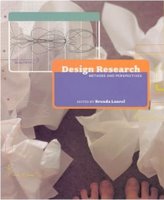 Book: Design Research
Book: Design Research
"Design plays a role that is distinct from, but complementary to the roles of science and of technological innovation in the advancement of knowledge ...
Designers are concerned with the socially, culturally, and spatially situated application of technologies to meet specific human needs. Successful design depends upon deep understanding of needs and their contexts, practical knowledge of the means available to respond, and strategies for creatively relating the two. It combines resourceful problem solving with ongoing critical reflection." -MIT Design Lab
Social science discplines like ethnography and anthropology are being adopted by designers to provide a basis for understanding (users).
 Book: Design Research
Book: Design Research
Saturday, December 02, 2006
Design History: " The People's Car"
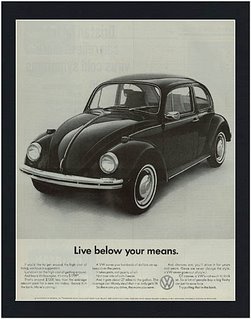 The most popular car ever made was the VW Beetle with more than 20,000,000 manufactured over a 60 year period.
The most popular car ever made was the VW Beetle with more than 20,000,000 manufactured over a 60 year period.I had the pleasure of experiencing the appeal of this product first hand, as an owner. Its distinctive form, the reliability of its rear mounted engine with it's unique squil holds wonderful memories of life as a young adult maturing in the 1980s.

If there was ever a product with personality this is one, just ask anyone who owned one.
Video of the History of the Car
Subscribe to:
Comments (Atom)